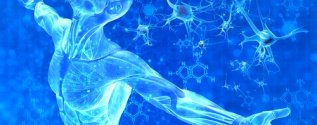Developers
K. Takanashi, S. Yamanaka, M. Wernig, J. Yu etc.
Description of the technology
Pluripotent stem cells can give birth to any cell type of an adult organism. Induces pluripotent stem cells (iPS cells) are cells similar to embryonal stem cells and obtained from human somatic cells of an adult organism via reprogramming. Reprogramming is realized by introduction of certain transcription factors into an adult cell (usually in the form of genes that are coding those transcription factors; rarely — in the form of RNA, corresponding to those transcription factors, or proteins per se). There is a number of genes using for reprogramming cells into iPS cells, for example Myc, Oct3/4, Sox2, Klf4 etc.
All the methods of iPS cells generation can be divided into the viral and nonviral ones, depending on the way in which transcription factors are delivered into cells. Again, the viral methods of iPS cells generation can be divided into those with and those without transgene integration into the host cell. Historically, the viral systems of induction were developed first. When such way of transfer is used, transgenes incorporate into random places of the genome. After the expression of those genes has begun, reprogramming starts. It is important that the expression of transgenes must stop in the strictly determined period of time. If those genes become silent earlier, reprogramming may fail or partly reprogrammed cells may be generated. Moreover, if those genes are late in becoming silent or if their expression don’t stop at all, the risk of tumors increases when those reprogrammed cells are used.
Numerous works, which have been performed up to date, have shown that iPS cells may be generated from any type of somatic cells of an organism. However, the source of iPS cells for the therapeutic use are usually those cells which can be obtained by biopsy in the easiest way. That is why the most popular source of iPS cells are the skin fibroblasts and keratinocytes, as well as the hair follicle cells.
Generated iPS cells may be differentiated into the required cell type and implanted into the patient’s body.
Practical application
iPS cells can be successfully used in the transplantation therapy. Thus, huge proliferative, and therefore regenerative, potential of human iPS cells was shown on the humanized animal models of sicklemia, Parkinson’s disease and
This technology is at the preclinical stage (however, in 2014, the
Laboratories
- The Wernig lab, Institute for Stem Cell Biology & Regenerative Medicine, Stanford, California (USA)
- Shinya Yamanaka Lab, Center for iPS Cell Research and Application, Kyoto University, 53
Kawahara-cho , Shogoin Yoshida,Sakyo-ku , Kyoto 606–8507 (Japan) - Wisconsin National Primate Research Center, University of
Wisconsin-Madison , Madison, Wisconsin (USA) - Stem Cell Engineering Laboratory, Max Planck Institute for Molecular Biomedicine, Münster (Germany)
- Jacob Hanna Lab, Department of Molecular Genetics, Weizmann Institute of Science, Rehovot (Israel)
Links
http://biomolecula.ru/content/1111http://www.inbi.ras.ru/ubkh/54/Novosadova_Grivennikov.pdf
http://www.stemcellclinic.com/the-worlds-first-application-
Publications
- Takahashi, Kazutoshi, and Shinya Yamanaka. «Induction of pluripotent stem cells from mouse embryonic and adult fibroblast cultures by defined factors." Сell 126.4 (2006): 663–676.
- Wernig, Marius, et al. «In vitro reprogramming of fibroblasts into a pluripotent
ES-cell-like state." Nature 448.7151 (2007): 318–324. - Maherali, Nimet, et al. «Directly reprogrammed fibroblasts show global epigenetic remodeling and widespread tissue contribution." Cell stem cell 1.1 (2007): 55–70.
- Yu, Junying, et al. «Induced pluripotent stem cell lines derived from human somatic cells." Science 318.5858 (2007): 1917–1920.
- Kim, Jeong Beom, et al. «Pluripotent stem cells induced from adult neural stem cells by reprogramming with two factors." Nature 454.7204 (2008): 646–650.
- Hanna, Jacob, et al. «Direct reprogramming of terminally differentiated mature B lymphocytes to pluripotency." Cell 133.2 (2008): 250–264.
